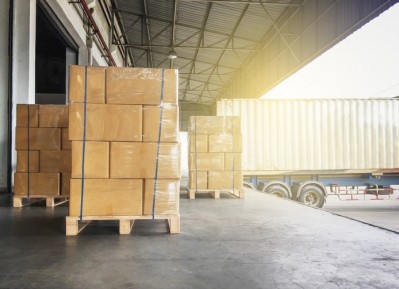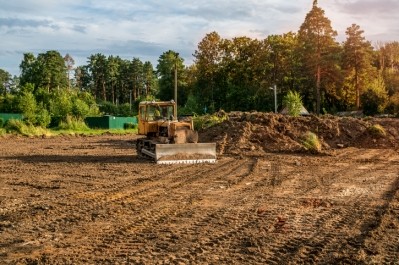Ajinomoto redefines feed grade amino acid business strategy for EMEA

In the last two years, AANE has applied for a raft of EU feed grade amino acid registrations, developed a new value charter, and expanded supply of valine and tryptophan in France. Critically, though, it has been retreating from a focus on crude protein (CP) reduction only.
AANE recorded 40 years of production in 2016, a good moment then to set about redefining the EMEA business strategy, its president, Daniel Bercovici, told us on a call.
“We changed the name from Eurolysine to Ajinomoto Animal Nutrition Europe (AANE) in October 2018. A strong name since the 1970s when we initiated lysine production in Europe, Eurolysine, even though we are still the only company producing this key amino acid in Europe, no longer reflects our core identity.
“Amino acids have been marketed for 40 years as building blocks of body proteins. But we have changed the way we look at them now in our R&D strategy.”
Today, it is about fine-tuning their use in animal diets, it is about precision nutrition, working hand-in-hand with the customer to tailor the amino acid formulation to their production context, he said.
More than just building blocks of protein…
Amino acid requirements for animals were standardized through the ideal protein concept, the correct supply of amino acids relative to the level of lysine, in order to simultaneously decrease protein levels in feed formulations and optimize animal performance.
However, that ideal protein concept has become too restrictive a development model for AANE, it limits innovation, explained Bercovici.
The model needed to change, he continued, as awareness has grown that amino acid requirements are contextual and can be adjusted to suit animal production conditions and goals, key in Europe where farming is subject to significant economic and social constraints. There was also the awareness that next limiting amino acids are frequently co-limiting, and, more importantly, that amino acids have untapped nutritional value, beyond protein reduction, he said.
“We are only at the beginning of the journey of understanding the intrinsic value of amino acids.”
CP reduction is still a big driver for intensive animal producers to continue their growth, in order to adhere to societal demands such as a lowering the environmental impact of livestock production, along with improving animal welfare and animal health, but amino acid suppliers need to have a better understanding of the functionality of those ingredients to succeed in CP substitution, said Bercovici.
Knowledge continues to evolve as to the optimal amino acids levels needed in lower CP diets, he added.
In the past years, AANE has been establishing partnerships with animal nutrition research institutions throughout Europe, and leveraging the amino acid research expertise within the wider Ajinomoto group, to evaluate amino acid impact on animal physiology and metabolism.
The business has also strengthened its innovation and customer team to get closer to the market, to be able to explain to customers the benefits of using a combination of amino acids in animal diets, rather than a single product, said Bercovici.
“Indeed, I have been spending the past few months visiting high level customers to explain our new direction.”
EU registrations
The crux of the new AANE strategy is continuous innovation, and being able to supply the next limiting AA, based on farming conditions. In that context, the European business has also been enlarging its amino acid portfolio, upping its game massively in terms of obtaining EU registrations for new products.
“Usually, we were registering one amino acid every 10 years. Now we have a bunch of new amino acids products from L-Arginine, L-Isoleucine, L-leucine, L-Histidine, L-Glutamine we are registering as feed grade.”
AANE wants to be able to “validate economically the technical and scientific story” in relation to NPD, he said. The European team tests products under local conditions, in combination with raw materials used in European rations and it undertakes local animal feeding trials.
“We don’t engage in new production if we can’t demonstrate an ROI to farmers, if we are not able to bring a product to the market at a cost that will provide a margin for the farmers on their return on a liter of milk or a kilo of chicken or a kilo of pork, we don’t do it.”
That objective is part and parcel of the AANE value charter, he said, which puts the goals of product quality, supply reliability, continuous innovation, environmental performance, genuine IP and EU regulatory compliance at the heart of the business.
‘It is not easy game’
In autumn 2017, Ajinomoto entered into a deal to subcontract the manufacture of feed use amino acids to China’s Meihua Holdings Group. Under that agreement, Meihua produces feed grade lysine and feed grade threonine, and the Ajinomoto Animal Nutrition Group markets the two products internationally.
The amino acid business is a tough one, said Bercovici. “It is not easy game.”
AANE, he said, did not invest in more lysine or threonine production in Europe because it cannot get a ROI on such outlay.
“Amino acids are costly to produce. This is one of their limitations.
“If you look at public data from the last amino acid factory builds globally, you can see that lysine costs more than US$3,000 per ton to produce in terms of CAPEX, and, for other amino acids, CAPEX costs can go up to US$10,000 per ton.”
"The good news for customers today is that with commoditized amino acids like lysine, threonine, valine, and, even, tryptophan, given their price, almost all the value is transferred to them [the customer].”
This is why there is little threonine production outside of China, he said.
“More than 80% of threonine globally is manufactured in China, and more than 50% of lysine worldwide is produced in that market as well.
“Though, there is still a significant amount of tryptophan produced outside China – in Indonesia, in France and in the US, and in valine as well, in China or here in France."
Leveraging current assets
Bercovici stressed that one of the strengths that AANE has is its manufacturing plant in Amiens, France, which saw expanded production in tryptophan - by 60% since 2016 - and valine output double last year.
“We have invested in the plant in terms of maintenance over the years, in renewal of equipment, and, so today, the facility offers us a lot flexibility. We can switch to the production of a new amino acid easily.”
AANE has also been looking to reduce the burden of using amino acids in the feed mill setting.
“Some feed mill customers were happy to receive a mix of amino acids; that allows them to accelerate innovation in terms of adding more amino acids to reduce protein in feed formulations, and using one silo instead of three. This does not mean we are entering the premix business; we are just supplying an Ajinomoto solution based on the feed miller’s needs. Demand is growing for this service. The piglet feed segment has been a front-runner, in this regard.”













